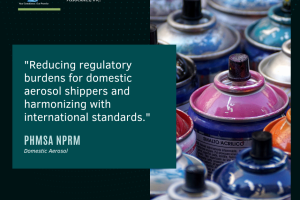PHMSA FAQ Part II

Incident Reporting and Notification
You may recall back in March 2022; The Department of Transportation’s (DOT) Pipeline and Hazardous Materials Safety Administration (PHMSA) announced it would be answering questions and converting historical Letters of Interpretation (LOI) regarding many subjects related to the Hazardous Materials Regulations (HMR) to better aid in compliance.
Well, on August 18, 2023, PHMSA published its second set of Frequently Asked Questions regarding incident reporting and notification. Like the first publication, it should be noted these are not considered legal requirements, but more so meant to help understand the often-confusing regulations.
For the full Part 2 Notice published in the Federal Register click HERE NOW! If you would like to view the first Notice before to get caught up, you can click HERE NOW!
Now, for your viewing pleasure, we have duplicated some but not all the questions and answers from the original PHMSA notice to give you an idea of what to expect:
1. Question: Who is responsible for completing and submitting a detailed hazardous materials incident report?
Answer: As specified in § 171.16(a), each person in physical possession of a hazardous material when an incident occurs must file a Hazardous Materials Incident Report on DOT Form F 5800.1 to the Department. See § 171.16(b) for information on providing and retaining copies of the incident report, details of where to obtain the forms, and where to file the forms.
2. Question: How long do I have to submit a written incident report?
Answer: In accordance with § 171.16(a), a person must submit a detailed incident report within 30 days of discovery of the incident to the Department.
3. Question: Who is responsible for providing immediate notice by telephone if an incident occurs that meets the criteria in § 171.15(b)?
Answer: As specified in § 171.15(a), each person in physical possession of a hazardous material when an incident occurs must provide notice by telephone to the National Response Center (NRC) 1–800–424–8802 (toll free) or 1–202–267–2675 (toll call). Any person who performs or is contractually responsible to perform any of the HMR functions is legally responsible under the regulations for their proper performance.
4. Question: If an incident occurs resulting in the closure of an access road ( i.e., on-ramp, off-ramp, jug-handle, or slip-road) to a major highway, is the closure of the access road leading to a highway considered a “road closure” and subject to the hazmat reporting requirements in § 171.15?
Answer: The answer is yes. Components of a highway, such as access roads and interchange areas that provide access to highways—including interstate highways—are considered components of a “major transportation artery or facility,” and are thus subject to the requirements in § 171.15(b)(1)(iv).
5. Question: Must the person who files an incident report keep a copy of the incident report?
Answer: The answer is yes. A copy, written or electronic, of the incident report must be available within 24 hours of a request for the report by an authorized representative or special agent of the Department of Transportation (DOT) and must be retained for two years. See § 171.16(b)(3) for requirements specific to retention of an incident report.
6. Question: How much hazardous materials may be unintentionally released during the hookup and breakdown of loading and unloading hoses before a person would be required to submit a Hazardous Materials Incident Report on DOT Form F 5800.1?
Answer: There are exceptions to release reporting, provided the incident is not otherwise subject to immediate telephone notification pursuant to § 171.15. For example, as provided in § 171.16(d)(1), the incident reporting requirements do not apply to a release of a minimal amount of hazardous materials from: (1) a vent, for materials for which venting is authorized; (2) the routine operation of a seal, pump, compressor, or valve; or (3) the connection or disconnection of loading or unloading lines, provided that the release does not result in property damage.
7. Question: A discovery of a hazardous materials incident is made after transportation has ended. May the consignee file an incident report?
Answer: The answer is yes. A person may file an incident report for a hazardous material release or incident—even when not required—if any of the circumstances set forth in § 171.15(b) or § 171.16(a) have occurred.
Again, for complete view of the Part 2 Notice published in the Federal Register click HERE NOW! In the meantime, you can check out other quick reads in our news section on our website, but don’t forget to follow us on all our social media outlets at Facebook and LinkedIn to be the first to know when new content like this drops.
Another important resource you may want to check out is our monthly newsletter that offers you even more regulatory news, special offers, and industry insights. However, if you’re in need of immediate help, you can always contact us directly through our website at www.learnhazmat.com or give us a call at 412.249.1111 for a 100% FREE CONSULTATION and one of our dedicated team members will help you decide what industry leading training or compliance solution best fits your needs!




